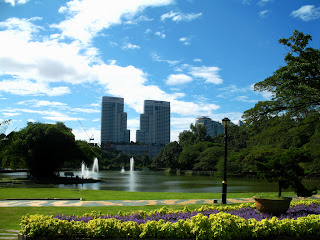The Petronas Towers in Kuala Lumpur is an outstanding architectural marvel and excels as the World's tallest twin building. At the time of its inauguration it was the world's tallest building with 88- floor towers and unique Islamic art giving it a distinct local flair. Elegantly set against the trendy Kuala Lumpur City the towers are considered as an iconic landmark symbolizing Malaysia's great transformation.
The design of the towers was based on a blend of art, science and nature. This is signified by the inclusion of the Science Discovery Center, Symphonic Concert Hall and the Suria KLCC Mall.
The skybridge constructed between the towers' 41st and 42nd floors is a unique feature at Petronas Towers. The bridge is 170m above the ground, thus is ranked as the highest 2-storey bridge in the world.
Outside the Towers is the KLCC Park which contains an illuminated fountain, jogging paths, wading pools and a children's playground.
The Dewan Filharmonik Petronas (Concert Hall) is located at the podium in the towers and is recognized as one of the most acoustically sound concert halls in the world. Home to the Malaysian Philharmonic Orchestra, the hall is renowned for classical music performances.
Petrosains, the Petroleum Discovery Center is a modern science center with interactive sessions and elaborate displays creating a fun filled experience.
Considered by Malaysians as the most hip shopping mall, the Suria KLCC is a massive establishment with six levels of retail outlets and this crescent shaped shopping mall is also home to 270 specialty stores, cinemas and restaurants.
Considered by Malaysians as the most hip shopping mall, the Suria KLCC is a massive establishment with six levels of retail outlets and this crescent shaped shopping mall is also home to 270 specialty stores, cinemas and restaurants.

















































